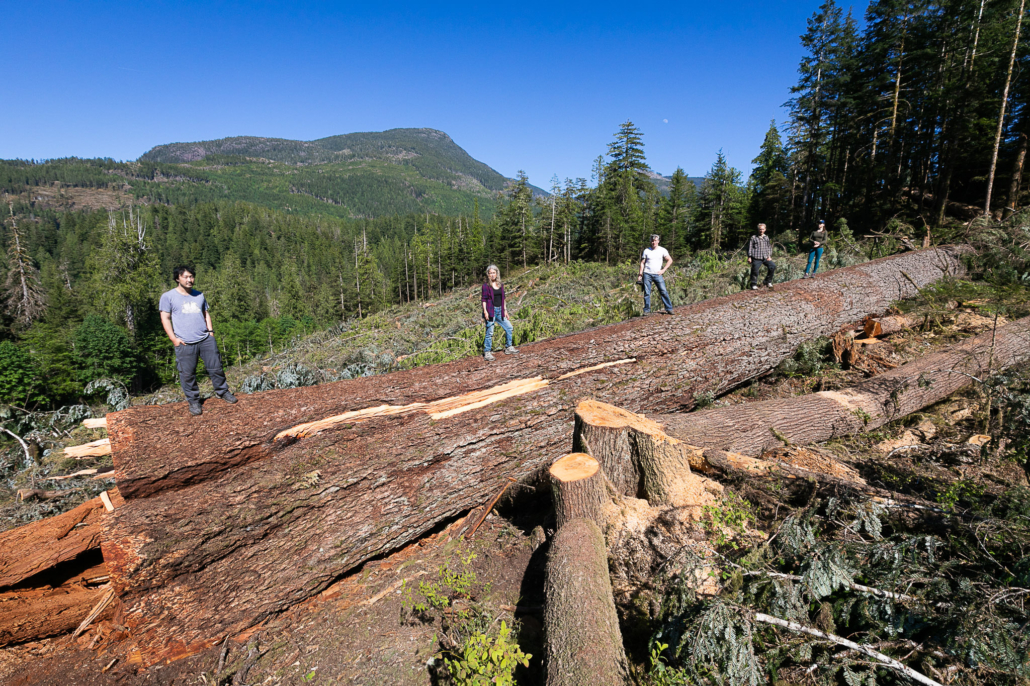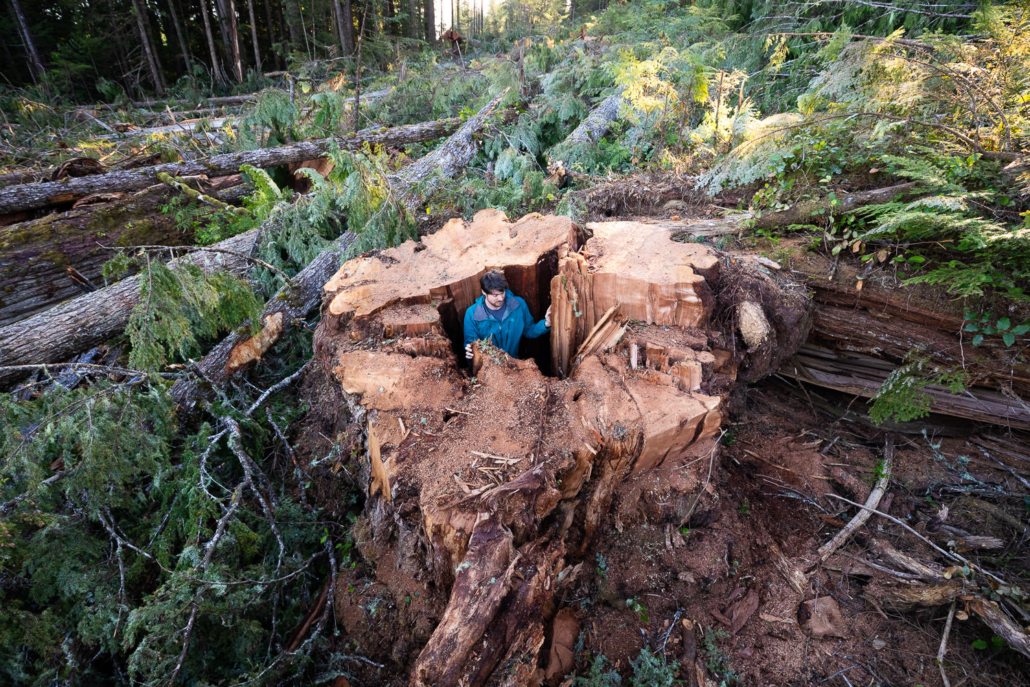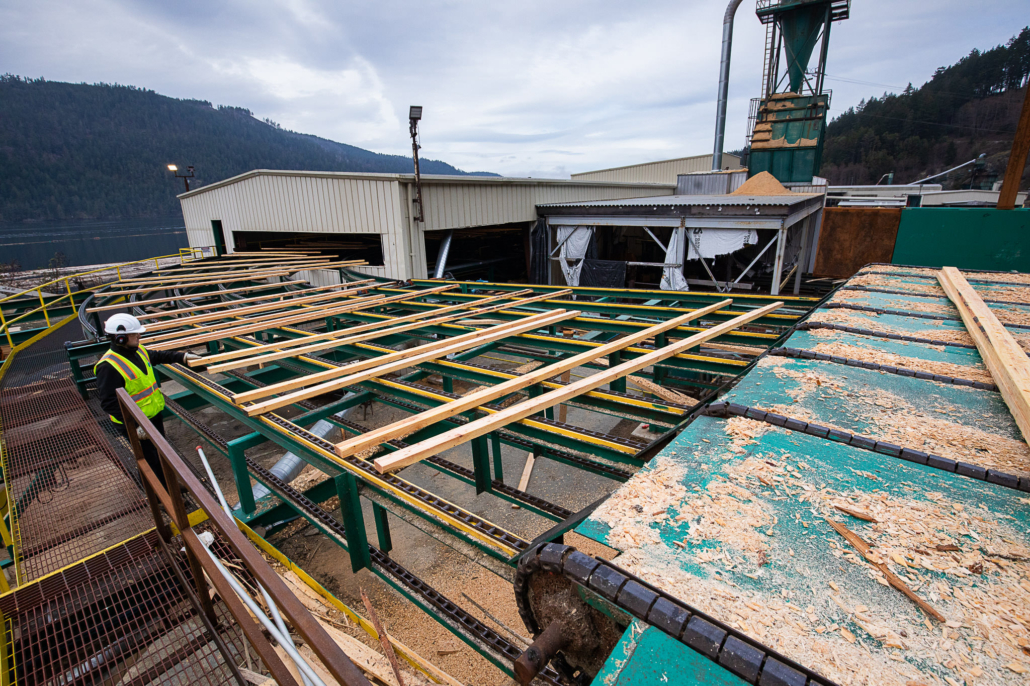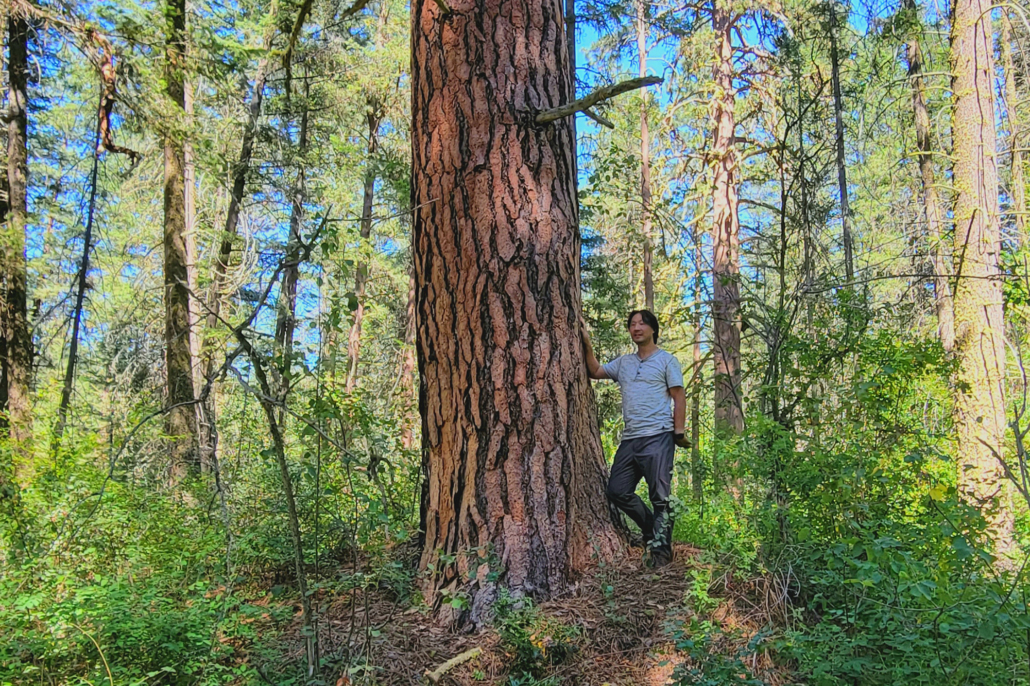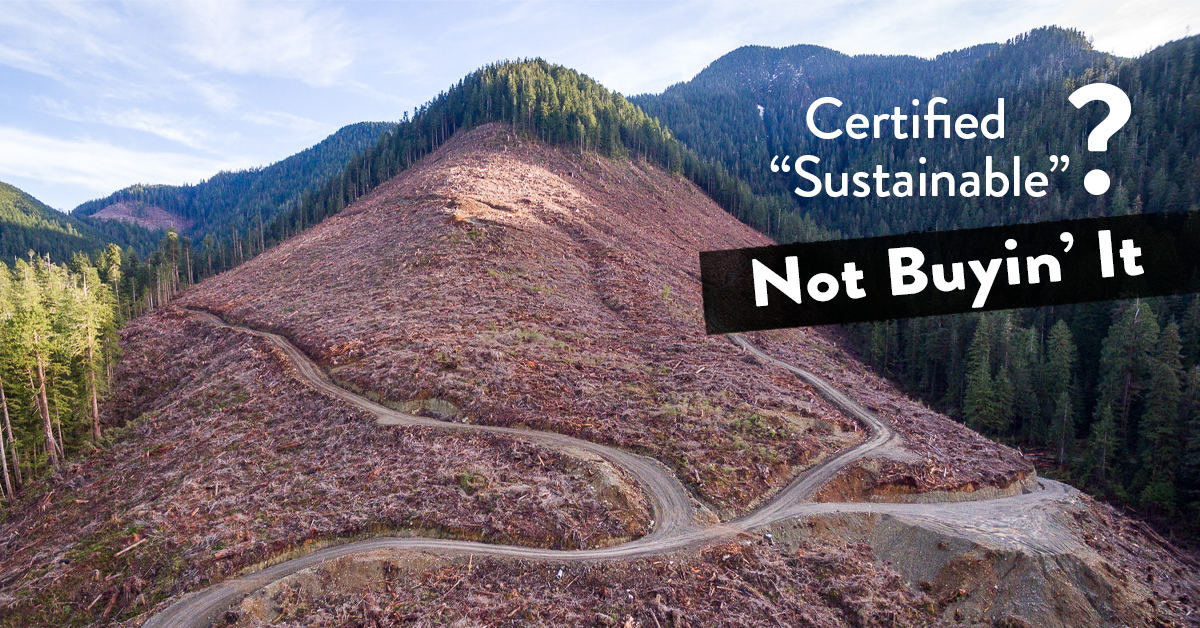 Jul 21 2021
Jul 21 2021“Sustainable” forestry claims are false and misleading: citizen complaint
Canadian citizens call for an investigation into Canadian Standards Association’s Sustainable Forest Management Standard, say it misleads buyers of forest products
VANCOUVER/UNCEDED xʷməθkʷəy̓əm (MUSQUEAM), Sḵwx̱wú7mesh (SQUAMISH) AND səlilwətaɬ (TSLEIL-WAUTUTH) TERRITORIES – As forestry companies continue to log endangered old-growth forests in British Columbia, six Canadians today requested the federal Competition Bureau to investigate the Canadian Standards Association (CSA) for promoting its forestry certification standard as an assurance of sustainability.
The “Sustainable Forest Management” standard (CSA SFM) certifies and promotes wood products from logging operations – including in BC’s old-growth forests – as sustainable, which the citizens call patently false and misleading.
The signatories on the complaint come from diverse backgrounds and vocations, but all have had their lives and livelihoods impacted by unsustainable forestry practices in Canada. They are foresters, scientists, First Nations leaders, tourism operators, environmentalists, and municipal leaders, with first-hand knowledge of CSA-certified logging.
“CSA is certifying the logging of our last ancient forests and calling it sustainable, and this is only possible because of its incredibly weak standards. This is completely unacceptable and will not only lead to the extinction of our ancient forests, but infringements and violations of Indigenous Title and Rights as First Nations seek to sustainably protect, manage, and steward the forests they hold jurisdiction over. In these times of renewed focus on the need to protect old-growth forests and their crucial importance for biodiversity and the climate, it’s clear that this logging is not remotely sustainable and is at odds with B.C.’s commitment to implement the Declaration on the Rights of Indigenous Peoples Act,” says Grand Chief Stewart Phillip, President of the Union of BC Indian Chiefs.
CSA has certified as “sustainable” the logging of some of BC’s most contentious old-growth forests, including Fairy Creek and the surrounding tenure on southwest Vancouver Island, the site of Canada’s longest-running logging blockade.
“What serious standards organization would certify the logging of the remaining three per cent of our most valuable, big tree forests as “sustainable”? This certification is meaningless, designed to fool consumers into thinking they’re doing the right thing by buying these products,” says environmentalist and conservation advocate Vicky Husband, another signatory.
Ecojustice, a non-profit environmental law firm, filed the request for an investigation with the federal Competition Bureau at the request of the signatories, supported by Stand.earth and Ancient Forest Alliance. The complainants seek an investigation and, if the Bureau finds the CSA’s sustainability claims are indeed false, recommend the organization be required to publicly retract the sustainability claims, and pay a $10 million fine, which could go towards supporting conservation projects such as the Indigenous Leadership Initiative for Indigenous Protected and Conserved Areas.
The CSA, most often associated with consumer product safety and quality control, ventured into certifying logging practices in Canada in 1996 at the request of provincial and national forest industry associations. Canada currently has 13 million hectares of forest certified to the CSA standard, two million of which are in BC. Canada has more certified forest area than any other country in the world, mostly to industry-led systems.
The complaint sets out how CSA certified companies are using the term “sustainable” to promote wood products, even though the CSA Standard does not require logging practices to meet any definition of “sustainable” nor “sustainable forest management.”
“Canada’s weak forestry laws give logging companies control over the forests, and they justify this by saying that the logging is ‘certified sustainable.’ This complaint clearly demonstrates that’s not true,” says Devon Page, Executive Director at Ecojustice. “Weaknesses in the CSA’s forest certification system make it incapable of guaranteeing that forest management is sustainable, resulting in destructive logging practices being sold as sustainable to consumers.”
Click here to see the inquiry submission.
About
Ecojustice: Ecojustice uses the power of the law to defend nature, combat climate change, and fight for a healthy environment. Its strategic, public interest lawsuits and advocacy lead to precedent-setting court decisions and law and policy that deliver lasting solutions to Canada’s most urgent environmental problems. As Canada’s largest environmental law charity, Ecojustice operates offices in Vancouver, Calgary, Toronto, Ottawa, and Halifax.
Stand.earth: Stand is an advocacy organization that brings people together to demand that corporations and governments put people and the environment first.
Ancient Forest Alliance: The Ancient Forest Alliance is a non-profit organization working to protect BC’s endangered old-growth forests and to ensure sustainable, second-growth forestry jobs.
For media inquiries:
Thais Freitas, communications specialist at Ecojustice
tfreitas@ecojustice.ca, 1-800-926-7744 ext. 277
Grand Chief Stewart Phillip, president of the Union of BC Indian Chiefs
250-490-5314
Tegan Hansen, forest campaigner at Stand
tegan@stand.earth
TJ Watt, campaigner and photographer at Ancient Forest Alliance
tj@15.222.255.145
Andrea Inness, campaigner-executive team at Ancient Forest Alliance
andrea@15.222.255.145
Profiles of Complainants
Anthony Britneff, RPF (Ret), worked for the B.C. Forest Service for 40 years, holding senior professional positions in inventory, silviculture and forest health. Now, he is devoted to replacing the status quo in B.C.’s forestry with a new paradigm based on the principles of conservation of soil, water, biodiversity, and carbon to address the dual crises of biodiversity loss and climate change.
Grand Chief Stewart Phillip has served as the President of the Union of BC Indian Chiefs for 23 years. During his presidency, and his previous 24 years on the Penticton Indian Band Council, Phillip has dedicated himself to advancing and safeguarding inherent Indigenous Title and Rights, including in the context of forest management.
Vicky Husband, Conservation advocate, is one of British Columbia’s best-known environmentalists. She has long fought for the protection of the ancient rainforests of BC, including Clayoquot Sound, and played a lead role in establishing Canada’s first grizzly bear sanctuary in the Khutzeymateen Valley. Her work has earned her numerous honours, including the Order of Canada, Order of BC, and a United Nations Global 500 Award for environmental achievement.
Dr Andy MacKinnon is a University of Victoria professor in Botany, following a 30-year career as an ecologist in the BC Ministry of Forests, Lands and Natural Resources. He is the co-author of six guidebooks to BC plants, and is a councillor in Metchosin on Vancouver Island.
Ben Geselbracht is a Nanaimo City Councillor, and currently co-chairs the Environment Committee. He also serves as a Director of the Nanaimo Regional District, Director-at-Large for the Union of BC municipalities; and on the Vancouver Island and Coastal Communities Climate Leadership Strategy Steering Committee.
Natasha Baert is the owner of Tofino Sea Kayaking, a business operated by her family in Clayoquot Sound for more than 30 years. She has been involved in conservation efforts throughout this time, and supports the work of local First Nations to establish a Tribal Park. Her family played a major role in building the local non-extractive economy, and can speak to the value of old growth forests in light of this.
Background information for media
The complaint
- was submitted for consideration by the Competition Bureau of Canada. It claims that the Canadian Standards Association (CSA) is making false and misleading representations regarding the use of the term “sustainable forest management.”
- alleges that weaknesses in the CSA’s forest certification system make it incapable of guaranteeing that forest management is sustainable, resulting in destructive logging practices being sold as sustainable to consumers.
- sets out how CSA, federal and provincial governments, forest industry associations, and individual forestry companies have misused the terms “sustainable” and “sustainability” to promote wood products from forests certified to the CSA standard. Numerous illustrative examples are provided.
- establishes how the CSA’s misrepresentations are false and materially misleading, based on both reviewing the wording of the CSA Standard and in the context of old-growth logging in British Columbia’s forests.
- references the Competition Act, which provides that both the “general impression” as well as the literal meaning shall be considered in determining whether or not a misleading claim has been made. The Supreme Court has interpreted “general impression” to mean that which “a credulous and inexperienced person has after an initial contact with the entire advertisement.” (I.e. the Competition Bureau will have to determine whether CSA’s standard and associated claims would meet an average person’s understanding of what “sustainable” means, as well as looking at more technical definitions of the word).
- is grounded in a detailed analysis of the definition of the word “sustainable,” and internationally accepted definitions of the term “sustainable forest management.”
- shows that the CSA Standard does not require practices to meet any definition of “sustainable” nor “sustainable forest management,” and that it is highly discretionary, ultimately leaving it up to each company to determine the level of performance it wishes to meet. It even suggests that if a company is consistently not meeting the targets that it has set for itself, then it should set “more realistic goals.”
- highlights that although the CSA standard contains criteria, including for values such as biological diversity and ecosystem condition, there are no performance requirements connected to these, and this is left to the discretion of the company seeking certification.
- demonstrates how the CSA Standard is incapable of even guaranteeing that timber harvest levels will be maintained over time, let alone other values, such as endangered species and ecosystem function. While it states that “for many people, sustainability involves limiting actual timber harvest levels to within the long-term capability of the forest to grow wood,” it only states that this is something that managers “might wish” to ensure, with no firm requirement.
Desired Outcome
- The Competition Bureau should conduct an inquiry into whether the CSA is making “false and misleading representations” and, if upheld, require CSA to remove all claims of “sustainable” and “sustainability” from its public communications. In addition, the CSA should be required to pay a $10 million fine, to go towards conservation efforts (such as the Indigenous Leadership Initiative for Indigenous Protected and Conserved Areas).
FAQ
What is forest certification?
- Forest certification is a system intended to enable consumers to select forest products based on whether they were produced sustainably, as set out in certification standards. Forest management practices are evaluated by an independent third party against these standards.
- The first forest certification system was created by the Forest Stewardship Council (FSC) in 1994, by a broad spectrum of environmental, Indigenous, social, and economic organizations. In response, a number of industry-led certification systems were developed as a way to compete with the FSC, including by the CSA (in response to a request from a coalition of forest industry associations). These industry-led systems were criticized for not requiring changes to status quo practices, but expanded rapidly in terms of the volume of wood products and area certified.
- The credibility of these industry-led systems has been called into question before, with reports issued as far back as 2001 (Behind the Logo) and 2004 (Footprints in the Forest).
- Government has looked to forest certification as a way to justify reduced government oversight of the forest industry, citing the independent third-party audits as evidence of compliance with regulations.
Who funds the CSA?
- The development of the CSA SFM system and standard was supported by the Forest Products Association of Canada and the Federal Government of Canada. Companies that wish to get certified pay an accredited certifying body (e.g. KPMG) to audit them against the CSA standards.
How much certified forest is there in Canada? How much of that is CSA?
- Industry-led forest certification systems have expanded rapidly in Canada, requiring little change to status quo practices. Canada currently has 164 million hectares of forest certified to one or more systems (13 million to CSA), more than any other country in the world (36% of global total certified area). BC leads Canada, at 50 million hectares certified (2 million to CSA).

